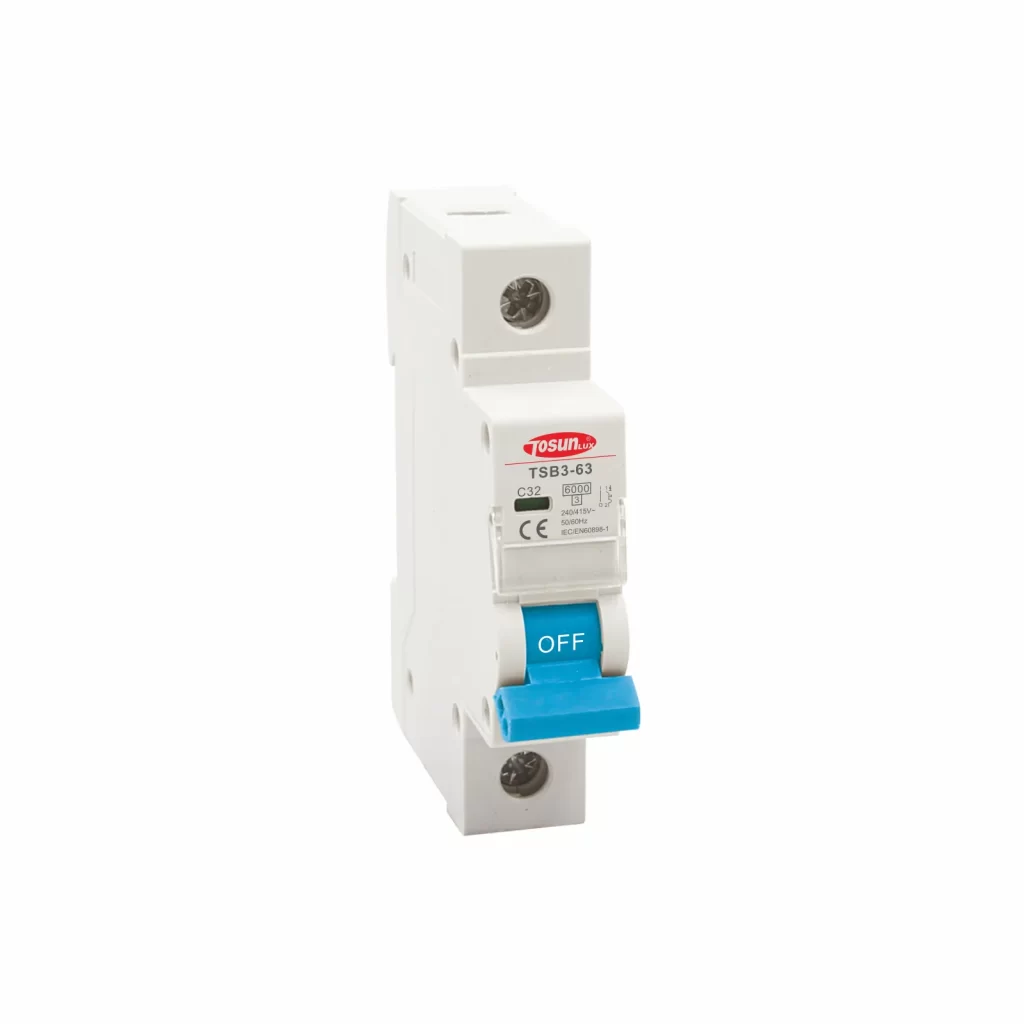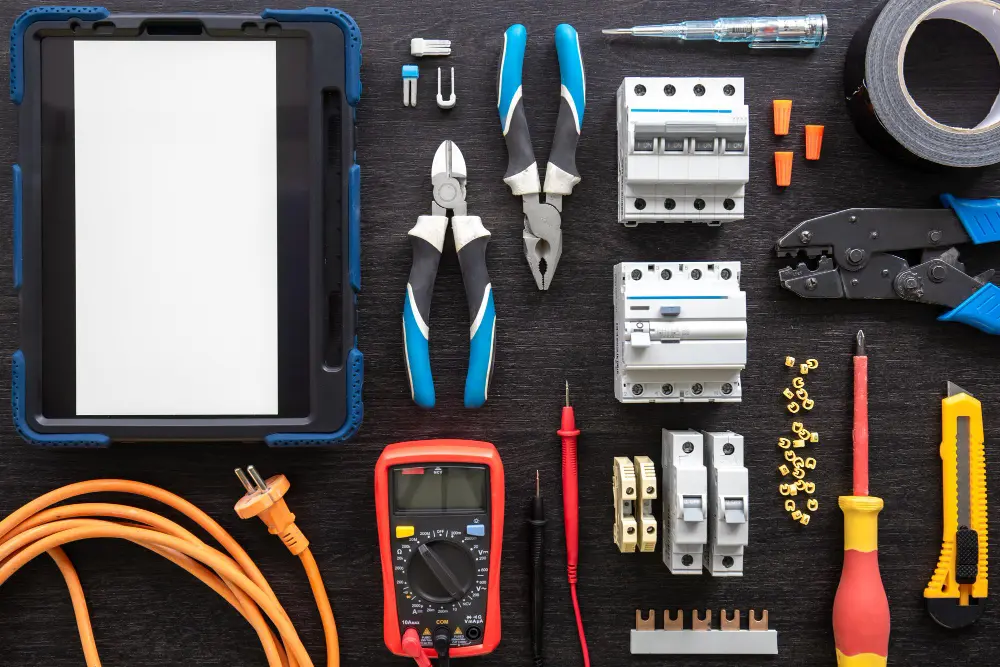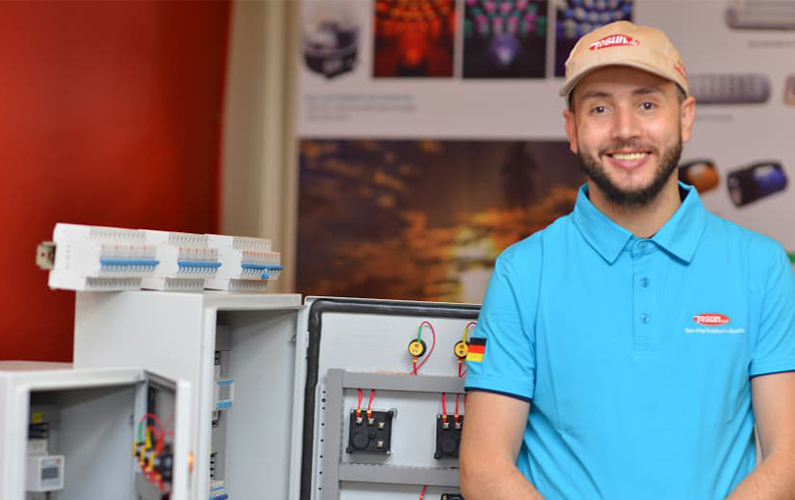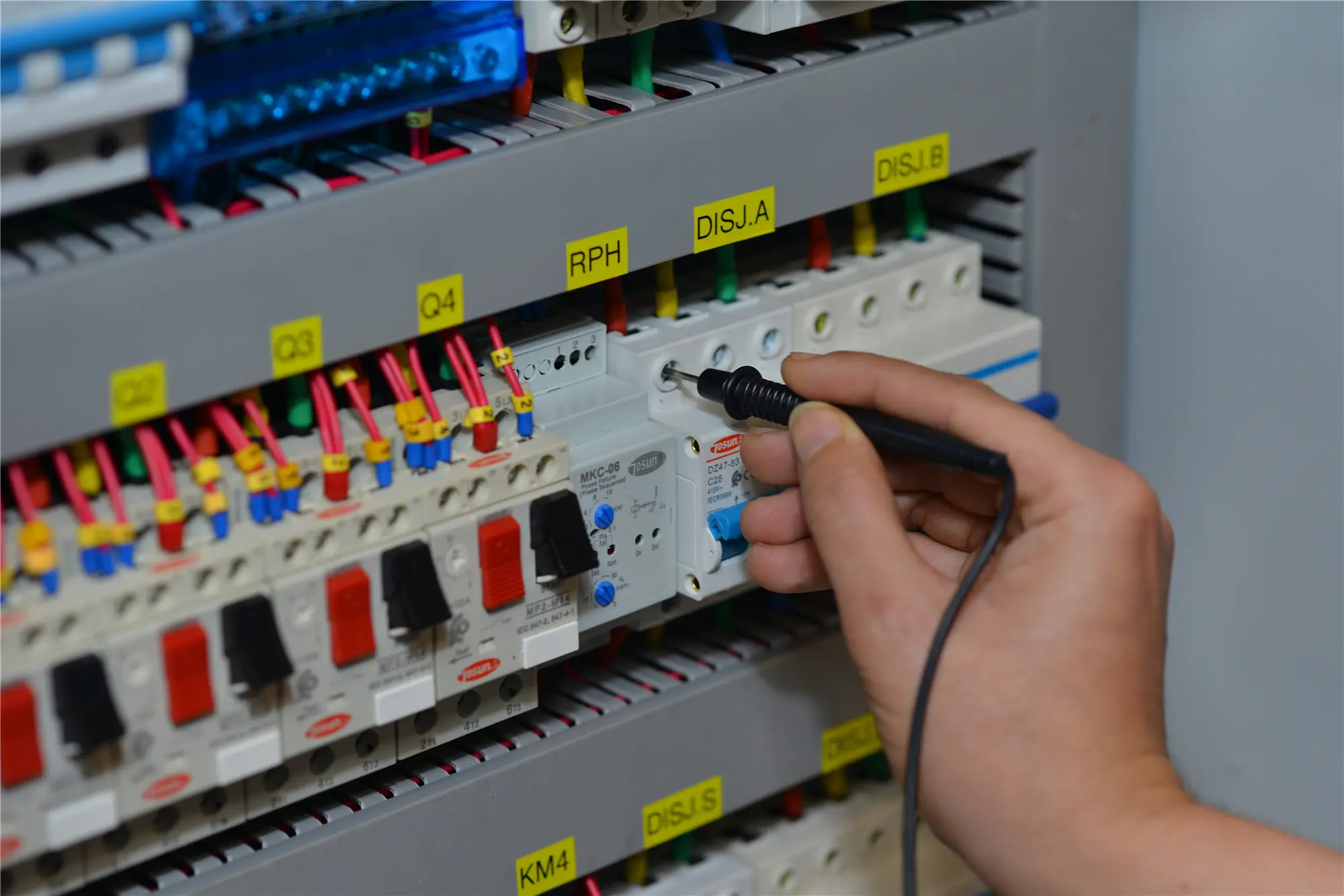Uma olhada por dentro: o processo de fabricação do disjuntor
Índice
AlternarNo entanto disjuntores são encontrados em residências, eles também são utilizados em indústrias como manufatura, instalações de saúde, data centers, mineração, petróleo e gás e agricultura, entre vários outros.
Mas você já se perguntou o que acontece dentro do processo de fabricação de disjuntores? Aprenda as etapas deste guia com especialistas baixa voltagem fabricante de produtos elétricos, TOSUN Electric:
– Etapa 1: Soldagem
– Etapa 2: Montagem
– Etapa 3: Inspeção
– Etapa 4: Eletrônica
– Etapa 5: O processo OTS
– Etapa 6: Ferramentas

Etapa 1: Soldagem
A primeira etapa do sempre complexo processo de fabricação de disjuntores é a soldagem. Aqui, como você sabe, os componentes metálicos, das estruturas aos terminais, são fixados com segurança uns aos outros.
Além disso, técnicas e técnicas de soldagem de precisão – como soldagem a ponto, a laser ou a arco – são implementadas para conferir resistência e confiabilidade às juntas, permitindo que suportem altas cargas elétricas. Há casos em que sistemas de soldagem automatizados são utilizados.
Etapa 2: Montagem
Após o processo de soldagem, os componentes soldados serão montados. Assim, as peças mecânicas, como molas, alavancas e carcaças, são encaixadas.
Este processo integra os elementos estruturais e funcionais do disjuntor, garantindo que as peças móveis operem suavemente sob diferentes condições de carga. Em ambientes industriais de grande porte, esta etapa pode, em alguns casos, envolver trabalho manual.
Etapa 3: Inspeção
Após a montagem, cada disjuntor passa pelo mais rigoroso e rigoroso processo de inspeção para detectar defeitos e verificar se o dispositivo está de acordo com as especificações do projeto.
O processo de inspeção inclui verificações dimensionais, medições de torque e avaliações visuais da qualidade da solda, alinhamento da montagem e defeitos de superfície. Às vezes, as indústrias utilizam métodos como raios X ou inspeções ultrassônicas para detectar falhas em detalhes.
Etapa 4: Eletrônica
Especialmente em disjuntores modernos, esta etapa desempenha um papel vital no monitoramento, controle e fases de proteção.
Isso envolve, em particular, a instalação de sensores, microprocessadores, unidades de disparo e módulos de controle. No entanto, lembre-se de que esta etapa exige o manuseio cuidadoso de componentes sensíveis para evitar danos.
Etapa 5: O Processo OTS
É aqui que as coisas podem ficar técnicas. O OTS, ou Simulação de Teste Operacional, é realizado na maioria dos disjuntores para validar seu desempenho em condições reais, mas apenas em simulação.
Aqui, os disjuntores são submetidos a cenários problemáticos, como curto-circuito, para confirmar como responderiam. Verifica a precisão do tempo, interrupção de corrente capacidade e desempenho de supressão de arco. Esta etapa é necessária para garantir que o disjuntor atenda aos padrões da indústria.
Etapa 6: Ferramentas
Por fim, o ferramental. Isso garante que todas as peças e equipamentos de fabricação permaneçam nas melhores condições. Esta etapa é essencial para manter a consistência em toda a produção.
Antes de concluir esta discussão, observe que os processos apresentados anteriormente se referem a processos gerais de fabricação de disjuntores. Por exemplo, no caso do disjuntor miniatura etapas do processo de fabricação, pode haver etapas adicionais ou menos etapas.
Você está procurando empresas fabricantes de disjuntores que garantam que cada uma dessas etapas necessárias seja realizada de forma completa? Considere contratar o seu disjuntores industriais de TOSUN Elétrico. Veja a diferença em termos de qualidade e aproveite as melhores oportunidades de personalização. Envie suas especificações técnicas hoje mesmo para uma solução de componentes personalizada.
Telefone: +86-577-88671000
E-mail: ceo@tosun.com
Skype: tosunelectric
Wechat: +86-139 6881 9286
WhatsApp: +86-139 0587 7291
Endereço: Sala No.1001 Wenzhou Fortune Center, Station Road, Wenzhou, China
SOLICITE UM ORÇAMENTO
Mande-nos uma mensagem pelo WhatsApp
 : +86-139 0587 7291
: +86-139 0587 7291 Inglês
Inglês Espanhol
Espanhol Russo
Russo Francês
Francês árabe
árabe Português do Brasil
Português do Brasil Ucraniano
Ucraniano Turco
Turco polonês
polonês Neerlandês
Neerlandês Italiano
Italiano Português Indonésio
Português Indonésio हिन्दी
हिन्दी اردو
اردو Último
Último Հայերեն
Հայերեն ไทย
ไทย Mongol
Mongol França
França Shqip
Shqip Eloquência
Eloquência



